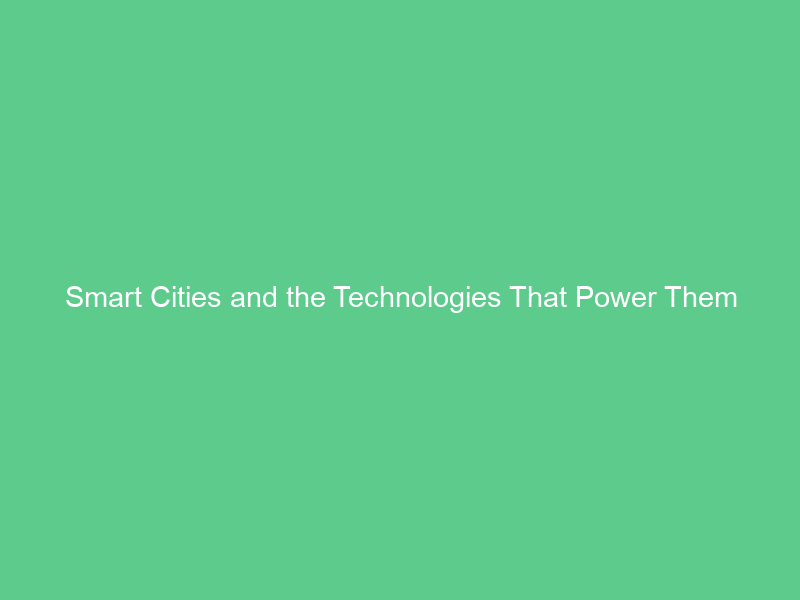
Intelligent cities rely on connected solutions to reduce costs, enhance sustainability and offer citizens greater choice and convenience. Furthermore, smart cities leverage cutting-edge technologies to meet broader social impact goals.
Boston utilizes smart sensors to collect information on traffic patterns and road conditions, enabling city officials to direct traffic more effectively. Other projects use waste bins that syphon waste into underground storage containers for easy collection – further decreasing foul odors while saving on waste collection costs.
Energy efficiency
Smart cities employ various technologies for energy efficiency, such as intelligent lighting systems with occupancy sensors and daylight harvesting to reduce artificial illumination needs and use sustainable construction practices to limit carbon emissions.
Smart city movements have also seen increased support for electric vehicles as more energy-efficient and producing less greenhouse gases than their traditional gas counterparts, providing more environmentally friendly transportation than taxis. Additional measures implemented by this movement to promote energy efficiency include building more energy-efficient structures and installing energy floors to harvest movement energy into electricity production.
Smart cities aim to foster sustainable and environmentally responsible urban environments by harnessing renewable resources, adopting cutting-edge technologies, and aligning environmental with economic interests. However, success of such initiatives depends on many variables including social considerations and barriers to implementation; yet a recent co-occurrence map revealed that most studies focused on smart cities prioritize positive prospects while neglecting essential social concerns.
Environmental sustainability
Smart cities use technology to address environmental challenges, boost sustainability and efficiency, and enhance citizen quality of life. Smart city systems gather vast amounts of data gathered by sensors and devices such as electronic signals analyzed in real time by computers – such as monitoring traffic and parking conditions, waste collection/disposal tracking, energy consumption tracking as well as emergency response planning assistance and urban planning support systems.
Smart city technologies can also help reduce wasteful use of natural resources like water and electricity. Sensors can identify leaky pipes quickly for repairs; while energy management software may use peak demand reduction as part of its strategy.
Citizens also stand to gain financially from smart cities through shared services and exchange apps based on the sharing economy concept. For example, car-sharing programs that help residents save both money and the environment by sharing vehicles can be especially advantageous in cities with high air pollution levels.
Economic growth
While the exact definition of a smart city may vary widely, many local governments are adopting technological innovations to make their urban environments more sustainable and efficient. Digital twins allow cities to create virtual replicas of physical systems to monitor performance and identify any issues before they arise.
A digital twin can transform a city into one that operates more efficiently, saves money, and enhances overall quality of life for its citizens. In the US alone, traffic congestion has decreased, commute times have been cut down significantly, delivery times for online shoppers decreased and additional safety measures are put into effect through these digital twins.
Smart cities tend to operate with an open data philosophy and regularly share operational and planning information with their residents, which encourages entrepreneurialism as businesses take advantage of enhanced efficiency and sustainability of infrastructure to reduce costs. Furthermore, smart technologies help increase accessibility for all residents by making services and spaces available without consideration of language, disabilities or other limitations.
Mobility
Smart solutions utilizing operational technologies enable cities to track and understand human mobility patterns more precisely, which allows for optimizing service delivery, improving energy efficiency and environmental sustainability, and decreasing private vehicle use.
Smart cities enhance public transport services and enable multimodal travel by expanding reach and frequency, increasing opportunities for multimodal journeys, making cities more pedestrian- and bike-friendly, creating practical alternatives to driving cars like ridesharing/carpooling services and ride-sharing options.
Smart city projects often incorporate plans to make data collected through smart systems more transparent and available to residents – often via dedicated apps that make life easier – during emergency situations. Smart systems prioritize calls at call centers while traffic signal preemption makes it easier for first responders to reach the scene more quickly. By making cities more resilient in these ways, data helps make cities less susceptible to disasters and emergencies; many smart city projects also plan on making this information available via dedicated apps that make daily chores simpler for them as well.

